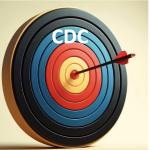For years, we’ve been told a simple story about the “opioid epidemic”: first, doctors prescribed too many pills, then reformulated OxyContin “drove” people to heroin, then fentanyl arrived, and now a wave of ultra-potent synthetics is killing “naï
opioids
I’ve written about this stupidity before. I’ll do it again next year. It will still be stupid then. [1]
Join Cameron English, Dr. Chuck Dinerstein and Dr. Jeff Singer on Episode 133 of the Science Dispatch podcast as they tackle drug legalization.
Join Cameron English and Dr. Chuck Dinerstein on Episode 124 of the Science Dispatch podcast as they discuss:
Join Cameron English and Dr. Chuck Dinerstein on Episode 109 of the Science Dispatch podcast as they discuss:
When Mark Ibsen, MD, spoke as a panelist in the Cato online event “Pain Refugees: Collateral Damage in the War on Drugs” last December, he had no idea that represe
A version of this article was originally published in 2016.
Join Cameron English and Dr. Chuck Dinerstein on Episode 104 of the Science Dispatch podcast as they discuss:
Join Cameron English and Dr. Chuck Dinerstein on Episode 100 of the Science Dispatch podcast as they discuss:












